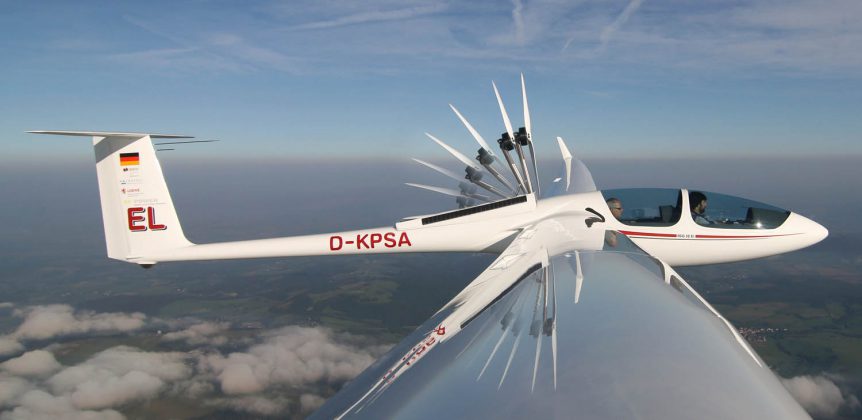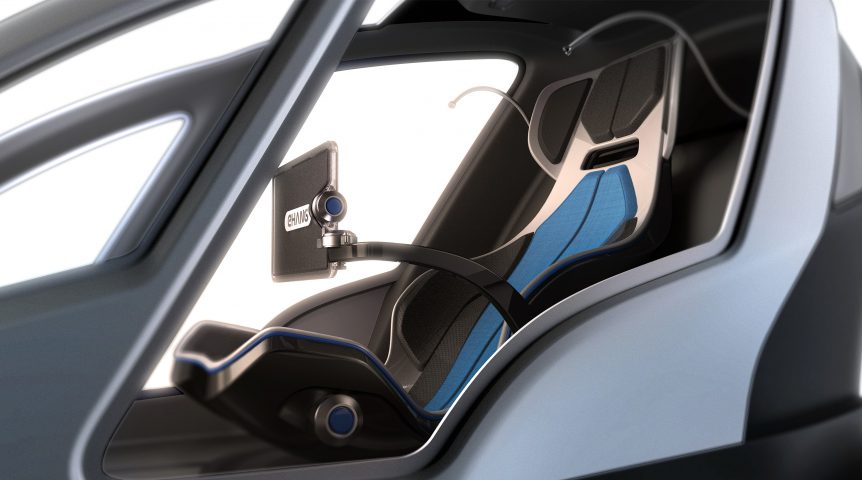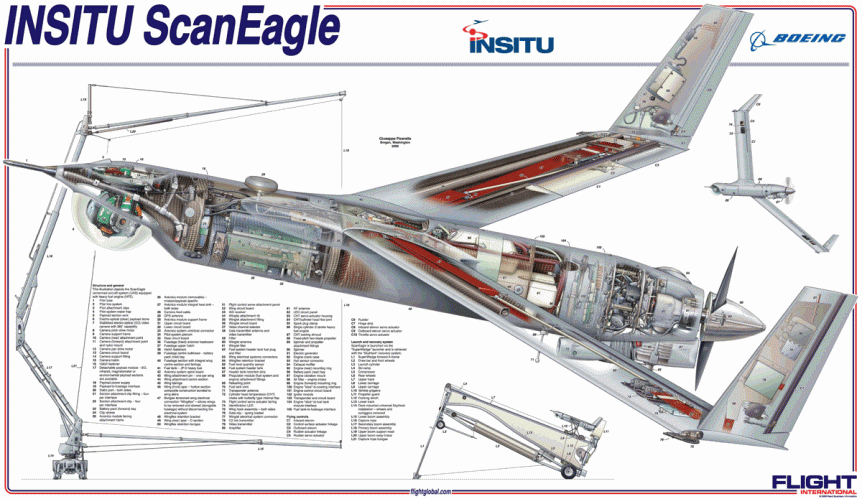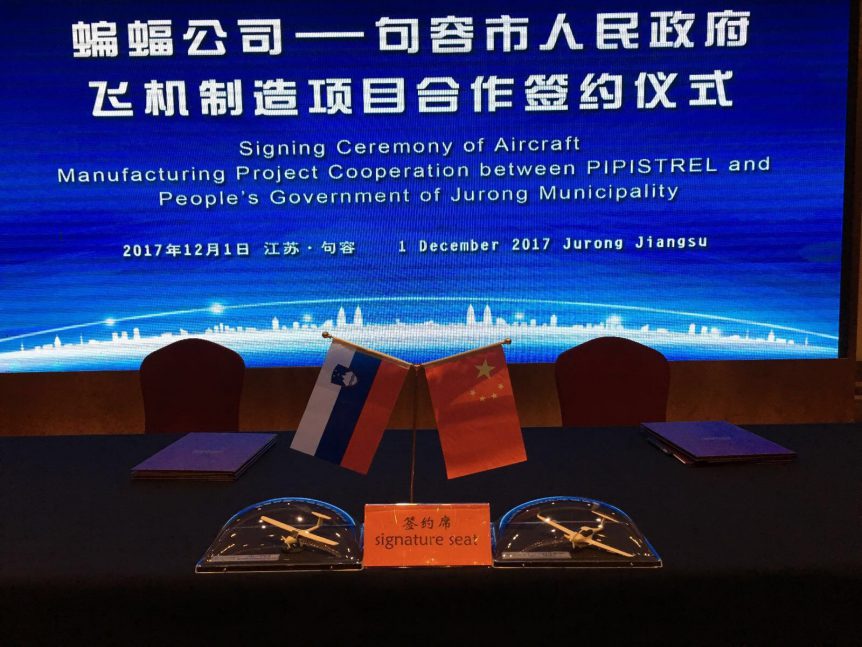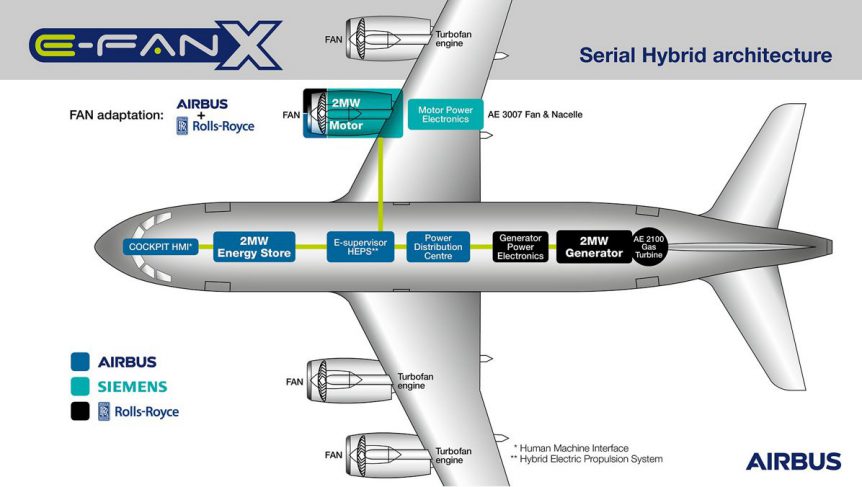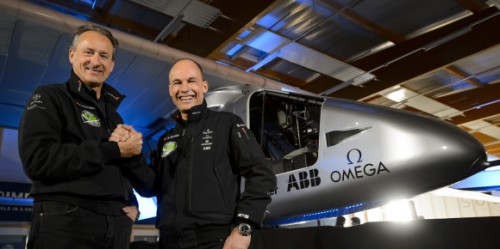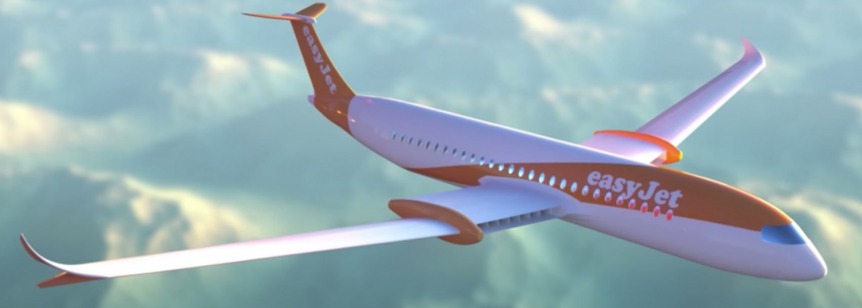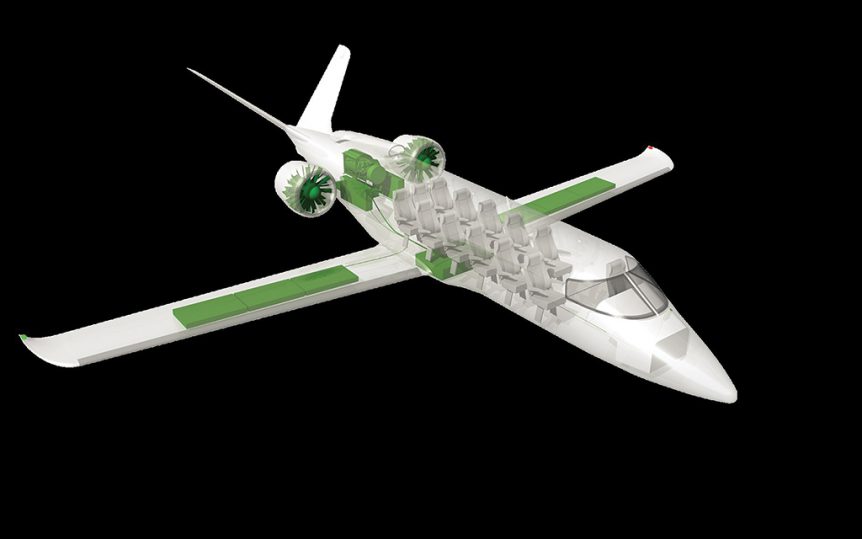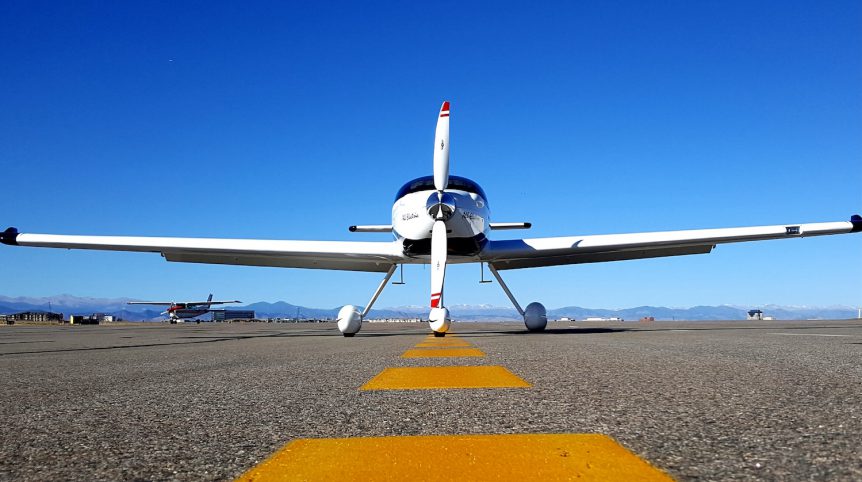Alexander Schleicher Segelflugzeugbau (sailplane maker) has been crafting high-performance soaring craft since its inception in 1927. Their latest creation, a two-seat, 20-meter (65.6 feet) span motorsegler, the ASG32 El, includes a 25 kilowatt synchronous motor driving a Schleicher-designed 1.55 meter (5 feet) retractable propeller. The motor is a “home help” device, a sustainer motor to keep the ASG 32 El aloft once it is launched by a winch or by being pulled by a towplane. The motor does not allow for self-launching. Its low power, coupled with the airplane’s clean design, does enable a 1.3 meter-per-second (255 feet per minute) rate of climb. The aircraft’s battery is sufficient for 20 minutes of all-out power or 100 kilometers (62 miles) of “sawtooth” flight, short climbs followed by longer glides, even with a full load of two pilots. A single control level raises the motor and propeller into operating position, and when pushed further, turns the motor on and controls the …
Ehang Flies One and Two Passengers in Surprising Flight Demonstrations
An Executive Perk Unlike Any Other Chinese firm Ehang staged a demonstration of great confidence in its 184 (one passenger, eight motors/rotors, and four arms) autonomous flight vehicle. The CEO and all executive members of the firm, and Guangzhou government officials got rides, with many giving thumbs-up signs during their trips. Hu Huazhi, Founder and CEO of Ehang, fills us in on numbers. Over 150 technicians and engineers worked more than 1,000 days and ran over 1,000 test flights to bring the Ehang 184 to its current level of trustworthiness. Flights held at the Ehang test flight site in Llanyungang City show the founder using stick and rudder to control the machine. Xiong Yifang, cofounder and CMO for Ehang, flew with great enthusiasm while Huazhi notes a previously unannounced two-seater has carried the heaviest passengers, including Zhong Hang, Vice President, and Richard Liu, Chief Financial Officer – with up to 210 kilograms (462 pounds) combined weight. A lighter VP, Tang …
Vahana Flies! Another Competitor in the Sky Taxi Airspace
Zach Lovering, Project Executive for Airbus subsidiary A3 reports, “Today marks a historic day for Airbus, A³, and the Vahana team. We can now announce our successful first flight. At 8:52AM on January 31, 2018 in Pendleton, Oregon, our full-scale aircraft, dubbed Alpha One, reached a height of 5 meters (16 feet) before descending safely. Its first flight, with a duration of 53 seconds, was fully self-piloted and the vehicle completed a second flight the following day. In attendance was the full Vahana team, representatives from the FAA, and A³ leadership, all coming together to witness this historic accomplishment.” Hovering Autonomously With canards built in Portland, Oregon at Flighthouse Engineering LLC, the tandem-winged, eight-rotor, 745 kilogram (1,642 pound) machine has a wingspan, or width, of 6.2 meters (20.3 feet), a length of 5.7 meters (18.7 feet) and a height of 2.8 meters (9.2 feet). Vahana is one of two Airbus VTOL urban transport options, the Pop.Up design combining ground and …
Ballard and Insitu Team on Fuel Cell-Driven Drone
Another pair of heavy-duty partners, Ballard Power Systems of Canada, normally powering city buses; and Boeing, through its subsidiary Insitu, team to create and fly viable fuel cell systems for drones. Insitu’s ScanEagle is already a world-beater for range and endurance, but it uses an internal-combustion engine (ICE), that although frugal, is not entirely green. Green Car Congress reports, “ScanEagle is 1.55 meters (5.1 feet) in length, has a wingspan of 3.11 meters (10.2 feet) and [a] maximum takeoff weight of 22 kilograms (48.5 lbs). The UAV can fly at a maximum speed of 41.2 meters per second (80 knots), reach a ceiling of 5,944 meters (19,500 feet),” and has flown over one million mission hours, making it a leader in multiple applications. Ballard’s Protonex® fuel cell systems have been used for over a decade to power drones of varying sizes, but all with ranges and endurance equaling or exceeding most of their ICE cousins. Improving the Breed In a December …
Pipistrel Electrifies China
Taja Boscarol, Public Relations Manager for Slovenian aircraft company Pipistrel, announced the formal establishment of the fourth company of the Pipistrel Group at the Chamber of Commerce in Jurong City (Jiansu Province), China. The new company, PIPISTREL ASIA-PACIFIC, General Aviation Technology Co. Ltd. was founded by Ivo Boscarol (51-percent owner) and Danny Wu Hao (49-percent). Hao, as financial partner, will provide the capital investment required for the construction of Project Jurong. The ownership of both Slovene companies, Pipistrel d.o.o. and Pipistrel Vertical Solutions (a new development under control of Tine Tomazic) remains 100-percent Slovenian as before. As Ms. Boscarol’s press release relates, “From now on, the PIPISTREL ASIA-PACIFIC, General Aviation Technology Co. Ltd company is the general distributor of Pipistrel for China. “It will be in charge for realization of the ‘Project Jurong’, the agreement about establishing an aviation and tourist center next to Jurong Lake national park. The agreement was signed between Pipistrel company and the government of the …
Rolls-Royce, Airbus and Siemens Team Up on Hybrid Airliner
As many of your editor’s friends know, he is often lured to trolling the tabloids, looking for juicy bits about the royal family or Hollywood royalty. Recently, while perusing the Daily Mail* for news of the upcoming Harry/Meaghan nuptials, he came across the big-headline news that three European power players – Rolls-Royce, Airbus, and Siemens, are collaborating on creating a testbed for a hybrid power system. The trio will take a Bae 146 four-engine regional jet, convert it to a hybrid demonstrator by 2020, and have a production plane in place by 2030. The high-wing airplane has four turbofans in place now, but the partners will replace one with a Siemens two-megawatt electric motor powered by a Rolls-Royce two-megawatt generator in the plane’s cargo hold. The UK paper reports, ”The companies said they were looking ahead to the European Union’s long-term goals of reducing CO2 emissions from aviation by 60 percent, as well as meeting noise and pollution limits that …
Solar Impulse Foundation Seeks 1,000 Solutions
Andre’ Borschberg and Bertrand Piccard, founders and pilots of Solar Impulse, have founded an important outgrowth of their globe-spanning mission – The World Alliance for Efficient Solutions. With almost 500 members and seeking 1,000 with responsible and profitable solutions the two are working to gain investors in literally saving the world. Bertrand Piccard sees a current vision of a world that’s out of phase with technological reality. In an editorial, he mused: “When I was flying with my solar plane over the Atlantic Ocean, I remember looking at the sun that was giving energy to my four electric motors and their huge propellers. There was no noise, no pollution, no fuel… and I could fly forever. At one moment I thought, “This is science fiction, I’m in the future.” And then I realized, “No, it’s completely wrong, I’m in the present. This is what the technologies of today already allow me to do. It’s the rest of the world that …
Jeff Engler’s Wright Aero Leaps Into Green Flight
Partnering with easyJet, a UK-based budget airline, to build an electric airliner capable of carrying 150 passengers on sub-two-hour flights, Wright Aero will substitute electrons for liquid fuel on one-fifth of EasyJet’s trips. Finding a ready collaborator in easyJet’s Carolyn McCall, Engler has a partner who is already making inroads into making jet flight cleaner. “’We can envisage a future without jet fuel and we are excited to be part of it. It is now more a matter of when not if a short haul electric plane will fly,’ said EasyJet CEO McCall,” in an interview with The Guardian. Engler added, in his latest Wright Weport: “First, the context is on Wednesday easyJet announced a partnership with us during their Innovation Day…. We could not be more excited! “(Note: if you have a second, would you mind posting the article on facebook/twitter? We’re hoping it reaches as many battery researchers’ eyes as possible! Thank you in advance!) “Second, our main takeaway …
Boeing Announces Zunum Progress, Acquisition of Aurora Flight Sciences
Boeing made two announcements this week that show the maker of large aircraft willing to investigate niche markets at smaller scales and with more personal service for flyers. Both involve electric power and the potential for automated flight. Zunum To Fly by 2020, In Service by 2022 Zunum Aero, the Boeing- and Jet Blue-backed regional airliner startup, will begin development of a 10-to-12 passenger airplane, hybrid powered with large electric ducted fans at the rear of the fuselage. Having flown on earlier examples of 10-passenger “airliners,” your editor welcomes this smaller package. Ford Trimotors and DeHavilland Dragons carried passengers in the 1930s, with simple accommodations and window seats for all. The single-aisle made boarding and deplaning easy and quick, and the low altitudes and slow speeds gave a great sense of engagement with the passing scene. Zunum provides a modern adaptation of this personalized service and opens many otherwise underused airports for new use. It brings back the regional airport …
Sun Flyer’s Two and Four Seat Electric Aircraft
George Bye has spent the last decade developing a viable two-seat training aircraft that would be electrically powered. His efforts included a Cessna 172 that took wing on battery power, and have evolved to the current product, a sleek two-seater that has 105 deposits to buy worldwide. At AirVenture 2017, George displayed the Sun Flyer 2 and announced plans to introduce a four-seater, the Sun Flyer 4. With ground tests complete on the aircraft and its 45-pound Emrax motor, George envisions flight tests coming this fall for the 2. Even given successful flight tests, certification may take two to three years. George has been working with the FAA to enable certification under Part 23 rules, and has made great headway in obtaining acceptance of electric powerplants on training aircraft. Flying Magazine reported in February that, “Developers of electric aircraft are rejoicing now that the Part 23 rewrite is complete. Unlike before, the new rule will allow for certified airplanes to …

